Global Pottery Styles Worth Your Attention
When you delve into the world of pottery, you embark on a journey through time and culture, where each piece tells a story rich with tradition and artistry. Pottery, in its myriad forms, is not just about utility; it embodies the spirit of the people who create it. From the spontaneous beauty of Japanese Raku to the vibrant colors of Mexican Talavera, every style offers a glimpse into the cultural tapestry of its origin. But what makes these pottery styles truly captivating? Is it the history behind them, the unique techniques employed, or perhaps the way they connect us to different cultures? Let's explore some of the most noteworthy pottery styles that deserve your attention.
Japanese Raku pottery is an enchanting art form that captures the essence of spontaneity and imperfection. This traditional craft is not just about creating beautiful pieces; it’s a philosophical journey rooted in the concept of wabi-sabi, which appreciates the beauty found in imperfection and transience. The firing process of Raku is unique, involving removing the pottery from the kiln while it’s still glowing hot, and placing it in materials like sawdust or leaves. This creates unpredictable and stunning effects in the glazes, leading to one-of-a-kind results that reflect the artist's emotions and intentions.
Originating from the vibrant heart of Mexico, Talavera pottery is a feast for the eyes. With its vivid colors and intricate designs, this folk art form is a beautiful blend of indigenous and Spanish influences. The history of Talavera dates back to the 16th century, showcasing the rich cultural exchange that occurred during colonization. Each piece is hand-painted, often featuring motifs inspired by nature, folklore, and traditional Mexican symbols. The craftsmanship involved in Talavera pottery is a testament to the skill and passion of the artisans, making it a cherished art form globally.
Celadon ware is a stunning type of Chinese pottery that is celebrated for its exquisite jade-green glaze. Dating back to the Song Dynasty, this pottery style represents the pinnacle of ancient Chinese ceramic artistry. The unique glaze is achieved through a meticulous firing process that requires a deep understanding of materials and techniques. Celadon pieces often feature delicate carvings and designs that reflect the natural world, making them not only functional but also works of art. The allure of Celadon lies in its ability to evoke a sense of tranquility and elegance, making it a sought-after collectible.
Majolica ceramics from Italy are characterized by their vivid colors and elaborate designs, making them a standout in the world of pottery. This traditional technique has evolved over centuries, with each region of Italy contributing its unique flair. From the intricate patterns of Deruta to the bold colors of Faenza, Majolica ceramics tell the story of Italy’s rich artistic heritage. The process involves tin-glazing, which allows for vibrant hues and detailed illustrations that often depict historical or mythological themes. Owning a piece of Majolica is like holding a slice of Italian history in your hands.
Iznik pottery, hailing from Turkey, is renowned for its intricate floral patterns and vibrant colors. Flourishing during the Ottoman Empire, this art form symbolizes cultural fusion, combining Persian influences with local artistry. The distinctive cobalt blue and rich red glazes are hallmarks of Iznik pottery, often featuring elaborate motifs inspired by nature. Each piece is a testament to the skill of the artisans, who meticulously hand-paint each design. The beauty of Iznik pottery lies not only in its aesthetic appeal but also in its historical significance, representing a time of cultural richness and exchange.
Crafted by Native American artisans, Pueblo pottery is known for its organic shapes and earthy colors. This traditional art form emphasizes community and cultural identity, often featuring symbolic motifs that tell stories of the land and its people. The techniques used in Pueblo pottery have been passed down through generations, reflecting a deep respect for nature and the materials used. Each piece serves not just as a functional item but as a connection to heritage and tradition, making Pueblo pottery a meaningful representation of Native American culture.
Scandinavian stoneware is appreciated for its functional yet artistic designs, often incorporating natural elements and earthy tones. This style reflects the region’s connection to nature and minimalist aesthetics, making it a favorite among those who appreciate simplicity and beauty. The craftsmanship involved in creating Scandinavian stoneware is meticulous, with potters focusing on both form and function. Each piece is designed to be used daily, yet it carries an artistic flair that elevates it beyond mere utility.
Indian blue pottery, distinguished by its vibrant blue hues and intricate patterns, originates from Rajasthan. This craft showcases a unique blend of Persian influences and Indian artistry, resulting in stunning pieces that are both decorative and functional. The use of natural dyes and traditional techniques gives Indian blue pottery its distinctive look, making each piece a work of art. The craftsmanship involved is a celebration of culture, history, and the artistic spirit of the artisans who create it.
French faience is a type of tin-glazed pottery that features colorful designs and historical motifs. Evolving through various regions in France, faience reflects the rich artistic legacy of the country. Each piece tells a story through its intricate designs, often depicting scenes from folklore, nature, or daily life. The craftsmanship involved in creating faience is a labor of love, with artisans dedicating hours to perfecting each detail. Owning a piece of French faience is like holding a piece of history and culture in your hands.
- What is pottery? Pottery is the ceramic ware made by shaping and then firing a non-metallic mineral, such as clay, at a high temperature.
- What are the different types of pottery? There are several types of pottery, including earthenware, stoneware, and porcelain, each with unique properties and uses.
- Why is pottery important? Pottery is important for both practical uses and as a form of artistic expression, reflecting the culture and history of the people who create it.
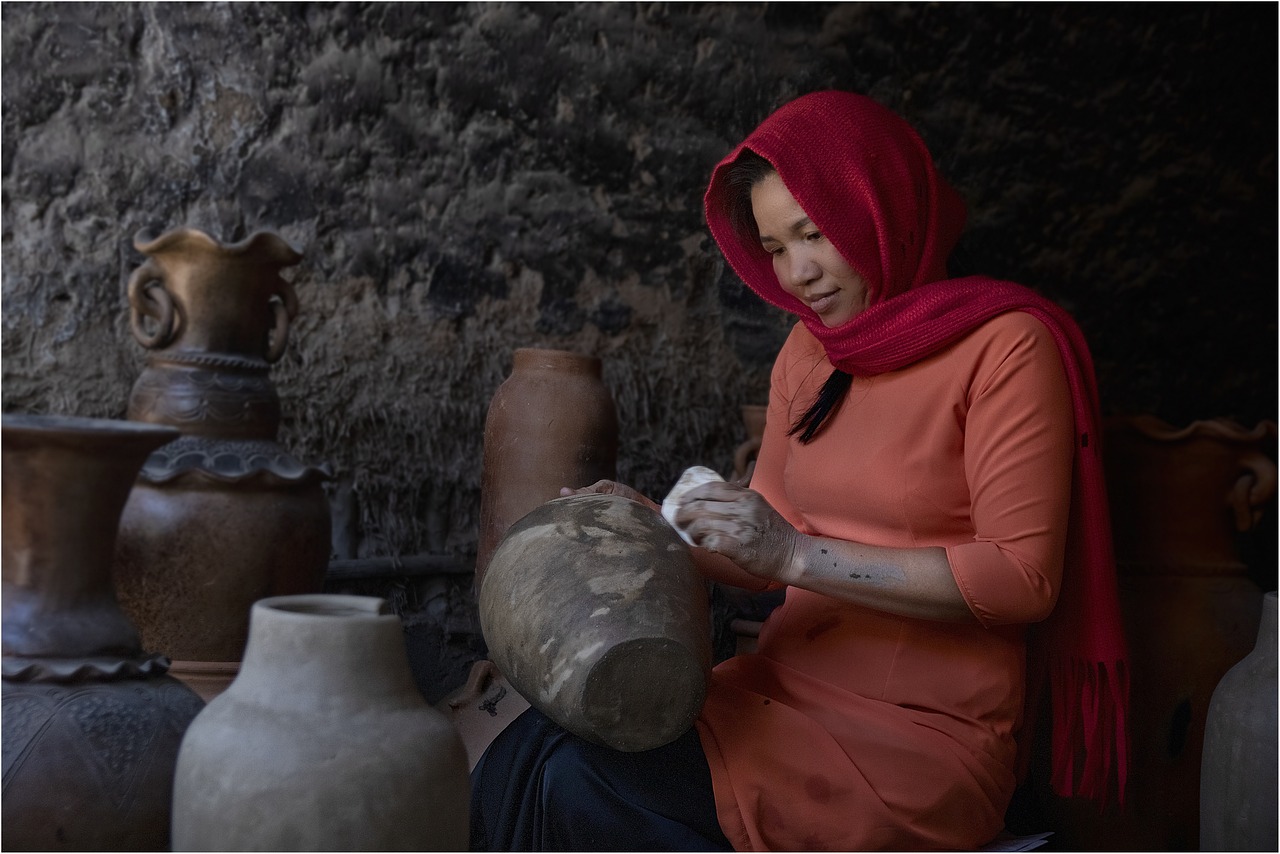
Japanese Raku Pottery
Japanese Raku pottery is a fascinating art form that transcends mere functionality, embodying the essence of Japanese aesthetics and philosophy. Originating in the 16th century, Raku was initially developed for the Japanese tea ceremony, where the beauty of simplicity and the appreciation of imperfection are paramount. The term "Raku" itself means "enjoyment" or "ease," reflecting the joy derived from the art of pottery making. Unlike conventional pottery, which often emphasizes uniformity and precision, Raku celebrates the unique and the unrefined.
One of the defining features of Raku pottery is its distinctive firing process. The pieces are typically removed from the kiln while they are still glowing hot, then placed in combustible materials such as sawdust or leaves. This spontaneous process creates a dramatic contrast of colors and textures, resulting in vibrant glazes that are often unpredictable. The wabi-sabi philosophy, which embraces the beauty of imperfection and transience, is deeply ingrained in this art form. Each piece of Raku pottery tells a story, showcasing the artist's individual touch and the serendipity of the firing process.
The glazes used in Raku pottery can vary widely, ranging from rich reds and deep blacks to shimmering metallics. This diversity is achieved through the careful manipulation of ingredients and the firing environment. The final outcome is often a surprise, which adds to the charm and allure of Raku. Artists may also incorporate various techniques, such as crackling or layering glazes, to enhance the visual appeal of their creations.
Raku pottery is not just about aesthetics; it is also steeped in cultural significance. The art form is closely tied to the Japanese tea ceremony, where each piece is chosen for its ability to foster a sense of tranquility and mindfulness. The act of serving tea from a Raku bowl becomes a meditative experience, inviting participants to appreciate the beauty of the moment and the craftsmanship behind the pottery.
In modern times, Raku has gained popularity beyond Japan, inspiring artists around the world. Contemporary Raku artists experiment with new forms and techniques while still honoring the traditional methods. This fusion of old and new continues to breathe life into Raku pottery, ensuring its relevance in today's artistic landscape. Whether displayed as a centerpiece or used in a traditional tea ceremony, Raku pottery remains a testament to the enduring power of art to connect us with our cultural roots and inspire us to find beauty in the unexpected.
- What is the significance of Raku pottery in Japanese culture?
Raku pottery holds a special place in Japanese culture, particularly in the context of the tea ceremony, where it emphasizes simplicity, beauty, and mindfulness. - How is Raku pottery made?
Raku pottery is created using a unique firing process where pieces are removed from the kiln while hot and placed in combustible materials, resulting in distinctive glazes and textures. - Can Raku pottery be used for food?
While Raku pottery is often used decoratively, some pieces can be used for food; however, it's essential to ensure that they are food-safe, as the glazes may not be suitable for all uses. - Where can I find Raku pottery?
You can find Raku pottery in art galleries, craft fairs, and online marketplaces, as many contemporary artists continue to create and sell their work.
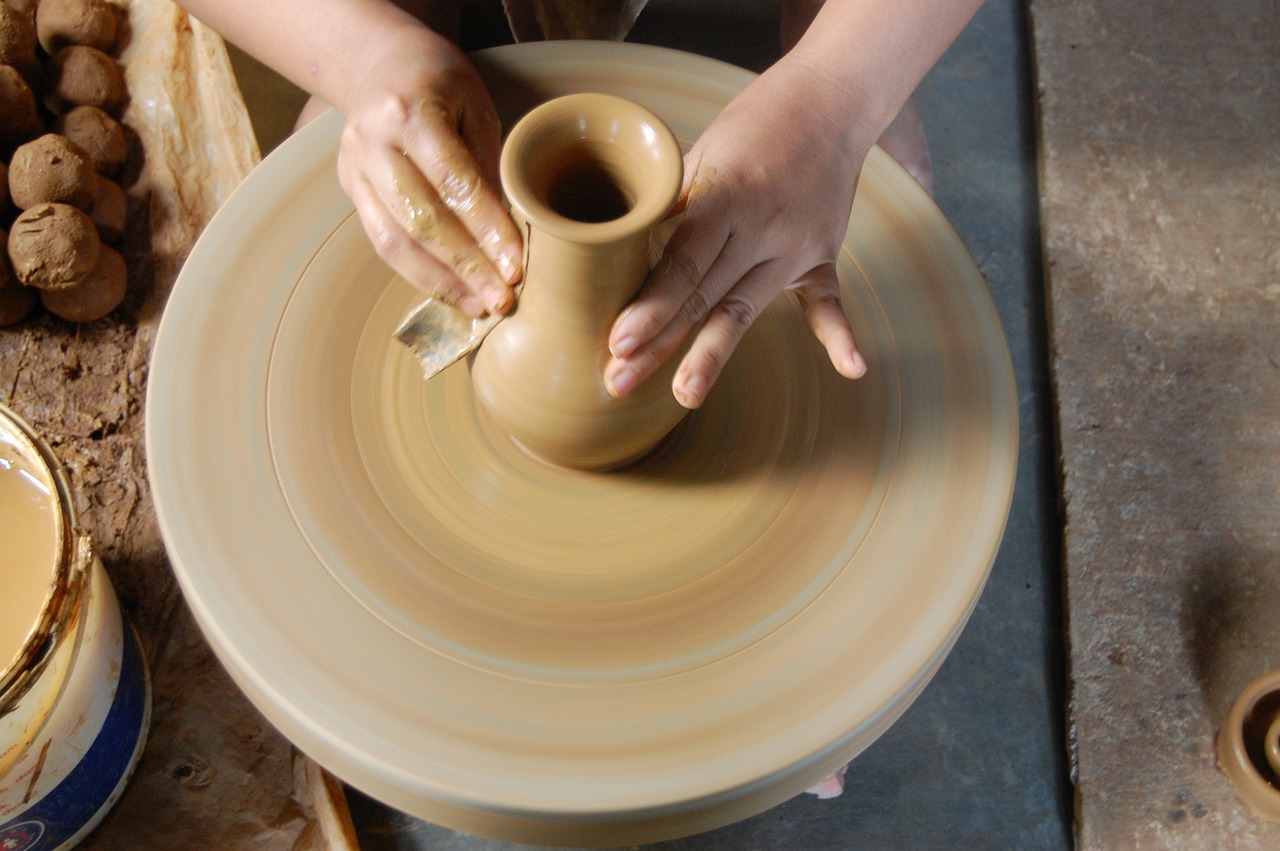
Mexican Talavera Pottery
Mexican Talavera pottery is a vibrant and expressive art form that has captured the hearts of many around the world. Originating from the city of Puebla in Mexico, this pottery is not just a craft; it's a celebration of culture and history. The name "Talavera" itself is derived from the Spanish town of Talavera de la Reina, where artisans first began to create these beautiful ceramics in the 16th century. However, it was in Puebla that the craft truly flourished, blending indigenous techniques with Spanish influences to create a unique style that is instantly recognizable.
The hallmark of Talavera pottery is its vibrant colors and intricate designs. Artisans use natural pigments derived from minerals to create their stunning glazes, resulting in a palette that ranges from deep blues and greens to bright yellows and reds. Each piece is hand-painted, making every item a unique work of art. This meticulous process not only showcases the skill of the artisans but also reflects the deep cultural significance of the designs, which often include motifs inspired by nature, religion, and daily life.
One of the most fascinating aspects of Talavera pottery is its historical significance. It represents a fusion of cultures, where indigenous Mexican traditions met European techniques brought by Spanish colonizers. This blend is evident in the various styles of Talavera, which can be categorized into traditional and contemporary forms. Traditional Talavera often features classic designs, while contemporary pieces may incorporate modern themes and abstract designs, appealing to a broader audience.
In terms of functionality, Talavera pottery is not just for decoration. It is often used for everyday items like plates, bowls, and tiles, making it a practical choice for those who appreciate art in their daily lives. The durability of the pottery, combined with its stunning aesthetics, makes it a cherished addition to any home. Imagine serving your favorite dish in a beautifully painted Talavera bowl—it not only enhances the meal but also tells a story of rich heritage and craftsmanship.
Moreover, the process of creating Talavera pottery is steeped in tradition. Artisans typically follow a series of steps that have been passed down through generations. From shaping the clay to applying the glaze, each step requires a high level of skill and patience. This dedication to craftsmanship is what sets Talavera apart from mass-produced ceramics. The artisans often sign their work, ensuring that each piece is recognized as a unique creation.
To better understand the significance and variety of Talavera pottery, here is a simple comparison of traditional and contemporary styles:
| Feature | Traditional Talavera | Contemporary Talavera |
|---|---|---|
| Design | Classic motifs, floral patterns | Modern themes, abstract designs |
| Color Palette | Bright, bold colors | Diverse, often muted or pastel |
| Functionality | Primarily decorative | Functional and decorative |
In conclusion, Mexican Talavera pottery is much more than just beautiful ceramics; it is a reflection of a rich cultural heritage and a testament to the skill of artisans who continue to keep this tradition alive. Whether you are an avid collector or simply someone who appreciates the beauty of handcrafted items, Talavera pottery deserves a special place in your heart—and your home.
- What is Talavera pottery made from? Talavera pottery is typically made from a special type of clay that is found in the region of Puebla, Mexico. The clay is shaped and then fired at high temperatures to create durable ceramics.
- Is Talavera pottery safe for food use? Yes, authentic Talavera pottery is safe for food use. However, it is essential to ensure that the pottery is lead-free and properly glazed.
- How can I tell if my Talavera pottery is authentic? Authentic Talavera pottery usually has a signature from the artisan, and the colors are vibrant and rich. Additionally, it should have a hand-painted design without any machine-made imperfections.
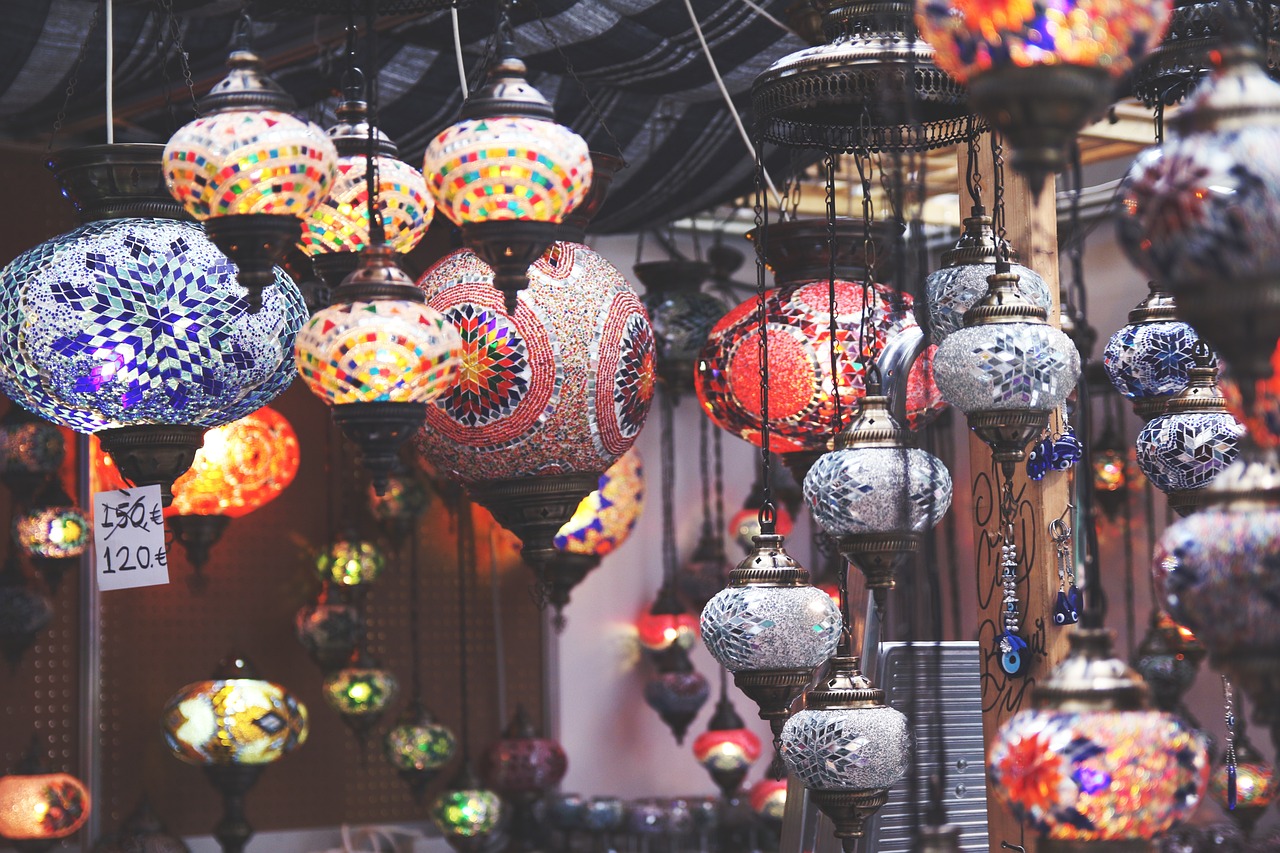
Chinese Celadon Ware
When it comes to pottery that embodies both elegance and history, stands out like a precious gem in the vast landscape of ceramic artistry. Originating during the Song Dynasty (960-1279 AD), this exquisite pottery is renowned for its stunning jade-green glaze that seems to capture the very essence of tranquility and nature. The term "celadon" itself refers to the delicate green color, which is often likened to the hues of ancient jade, a material deeply revered in Chinese culture.
The beauty of Celadon ware lies not just in its color but also in the intricate techniques used to create it. The process involves a meticulous firing method where the pottery is coated with a glaze that contains iron oxide. During firing, the iron reacts with the clay and the atmosphere within the kiln, resulting in the characteristic green shades. This unpredictability in color is akin to a painter's brush strokes, where each piece tells its own unique story through its variations in hue.
Historically, Celadon ware was not merely functional; it was a symbol of status and sophistication. The imperial courts of China prized these pieces, often using them for ceremonial purposes or as gifts to foreign dignitaries. The artistry of Celadon also reflects the philosophical ideals of its time, particularly the concept of harmony with nature, which resonates deeply in Chinese aesthetics. It was believed that the serene colors and smooth textures of Celadon ware could evoke feelings of peace and contentment.
Furthermore, the influence of Celadon ware extends beyond the borders of China. As trade routes opened, this beautiful pottery found its way to other cultures, inspiring artisans around the world. For example, in Korea, the tradition of making Celadon pottery flourished, leading to unique styles that combined local techniques with Chinese influences. The allure of Celadon has persisted through centuries, making it a sought-after collectible among pottery enthusiasts today.
To appreciate the depth of Celadon ware, one must consider its various forms and designs. From simple bowls to elaborate vases, each piece is a testament to the skill and creativity of the artisans. The tactile quality of Celadon pottery, often described as "soft" or "silky," invites touch, making it not just a visual delight but a sensory experience as well.
| Feature | Description |
|---|---|
| Color | Characteristic jade-green glaze |
| Era | Originated during the Song Dynasty |
| Technique | Firing process with iron oxide glaze |
| Symbolism | Represents harmony with nature |
| Influence | Inspired global pottery traditions |
In conclusion, is more than just pottery; it is a reflection of a rich cultural heritage that continues to captivate hearts and minds around the world. Whether you are a collector or simply an admirer, understanding the history and artistry behind these beautiful pieces can deepen your appreciation for this timeless craft.
- What is the main characteristic of Celadon ware? Celadon ware is primarily known for its jade-green glaze and smooth texture.
- When did Celadon pottery first appear? Celadon pottery originated during the Song Dynasty, around the 10th century.
- Is Celadon ware still made today? Yes, Celadon ware continues to be produced, with modern artisans often blending traditional techniques with contemporary designs.
- What cultural significance does Celadon have? Celadon ware symbolizes harmony with nature and has historically been associated with status and sophistication in Chinese culture.
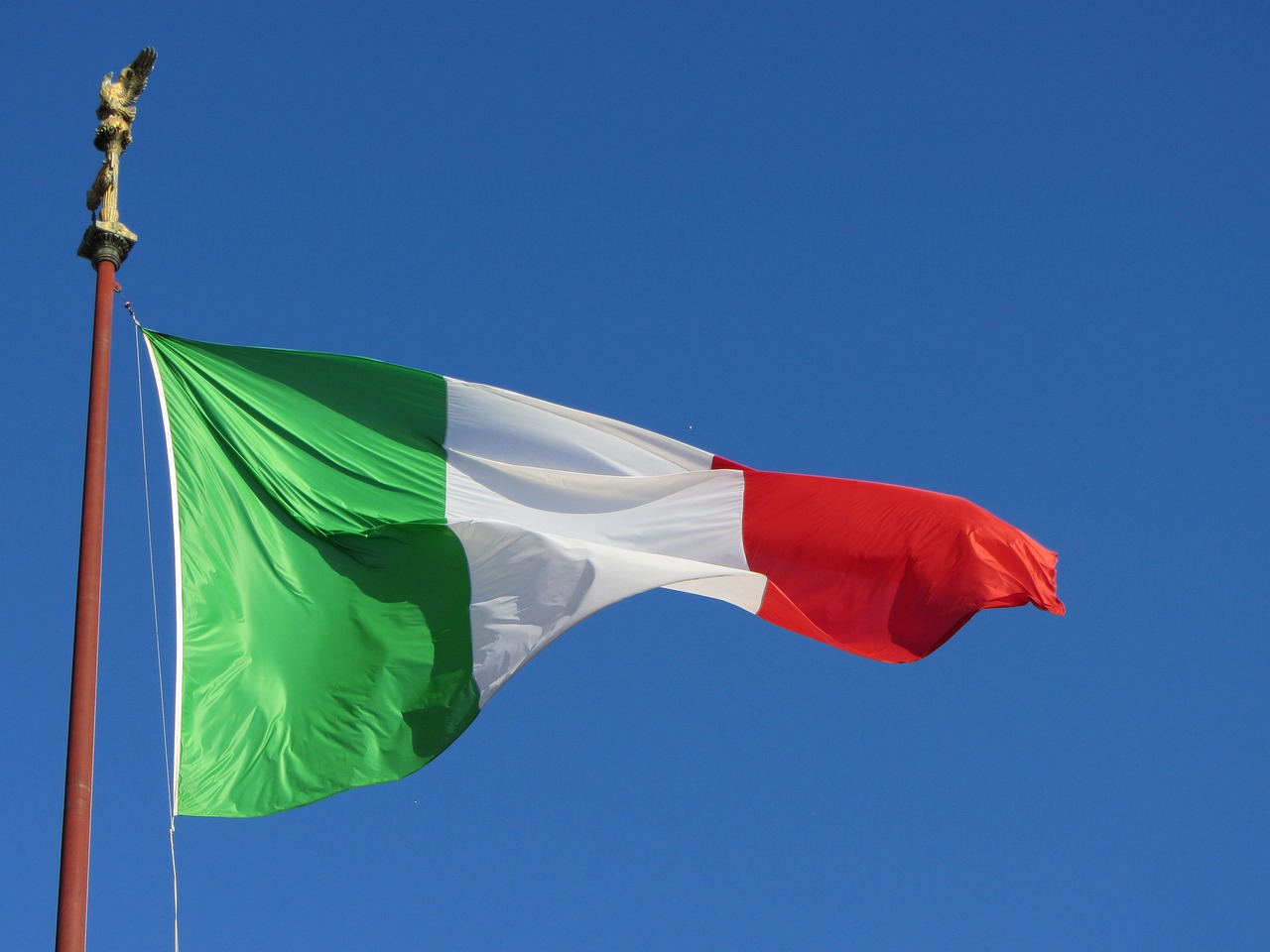
Italian Majolica Ceramics
When you think of Italian pottery, the vibrant and colorful world of Majolica ceramics undoubtedly comes to mind. Originating from the Mediterranean, this stunning art form has been captivating hearts and homes for centuries. Known for its brilliant colors and intricate designs, Majolica is more than just pottery; it’s a reflection of Italy's rich cultural heritage and artistic evolution. Imagine walking through a sun-drenched Italian market, where the air is filled with the scent of fresh basil and the sound of laughter, and you stumble upon a stall overflowing with beautifully crafted ceramic pieces. Each item tells a story, a tale of craftsmanship that dates back to the Renaissance.
The roots of Majolica can be traced back to the 15th century, when artisans began to experiment with tin-glazing techniques. This process involves applying a tin oxide glaze to earthenware, which creates a smooth, white surface that serves as a perfect canvas for vibrant colors. The result? A stunning array of pottery that bursts with life and creativity. Over the centuries, Majolica has evolved, adapting to regional styles and influences, yet it always retains its signature charm and flair.
One of the most fascinating aspects of Majolica is the way it reflects the local culture and traditions of the regions where it’s produced. For example, in Deruta, a town famous for its Majolica, you’ll find intricate designs that often depict mythological scenes or floral patterns. Meanwhile, in Faenza, another renowned center for Majolica, the pieces often showcase geometric patterns and vibrant colors that are undeniably captivating. This regional diversity adds to the allure of Majolica, making each piece unique and a collector’s dream.
Majolica ceramics are not just beautiful; they’re also functional. Many pieces are crafted for everyday use, from plates and bowls to decorative tiles. Imagine serving your guests a delicious Italian meal on a stunning plate adorned with colorful designs—it's a feast for the eyes as well as the palate! The durability of Majolica means that these pieces can withstand the test of time, becoming cherished family heirlooms passed down through generations.
As you explore the world of Italian Majolica ceramics, you might come across some common themes and motifs that define this art form. Here’s a quick overview:
- Nature-Inspired Designs: Many pieces feature floral and botanical motifs, celebrating the beauty of the natural world.
- Historical References: Traditional scenes from mythology and history often grace the surfaces of these ceramics, adding depth and storytelling to each piece.
- Vibrant Color Palettes: Expect to see a rich array of colors, including deep blues, sunny yellows, and lush greens, all harmoniously blended to create eye-catching designs.
In essence, Italian Majolica ceramics are a celebration of life, art, and culture. Each piece invites you to take a closer look, to appreciate the craftsmanship and history behind it. Whether you're a collector or simply someone who loves beautiful things, Majolica offers a glimpse into the heart of Italy—a land where art and everyday life intertwine seamlessly.
Q1: What is the difference between Majolica and other types of pottery?
A: The main difference lies in the tin-glazing technique used in Majolica, which gives it a distinctively bright and colorful finish compared to other pottery styles.
Q2: Can Majolica ceramics be used in the oven or microwave?
A: While some Majolica pieces are functional, it's best to check with the manufacturer, as not all are designed for high-heat use.
Q3: How do I care for my Majolica ceramics?
A: It's recommended to hand wash Majolica pieces with mild soap and avoid abrasive cleaning materials to preserve their beauty.
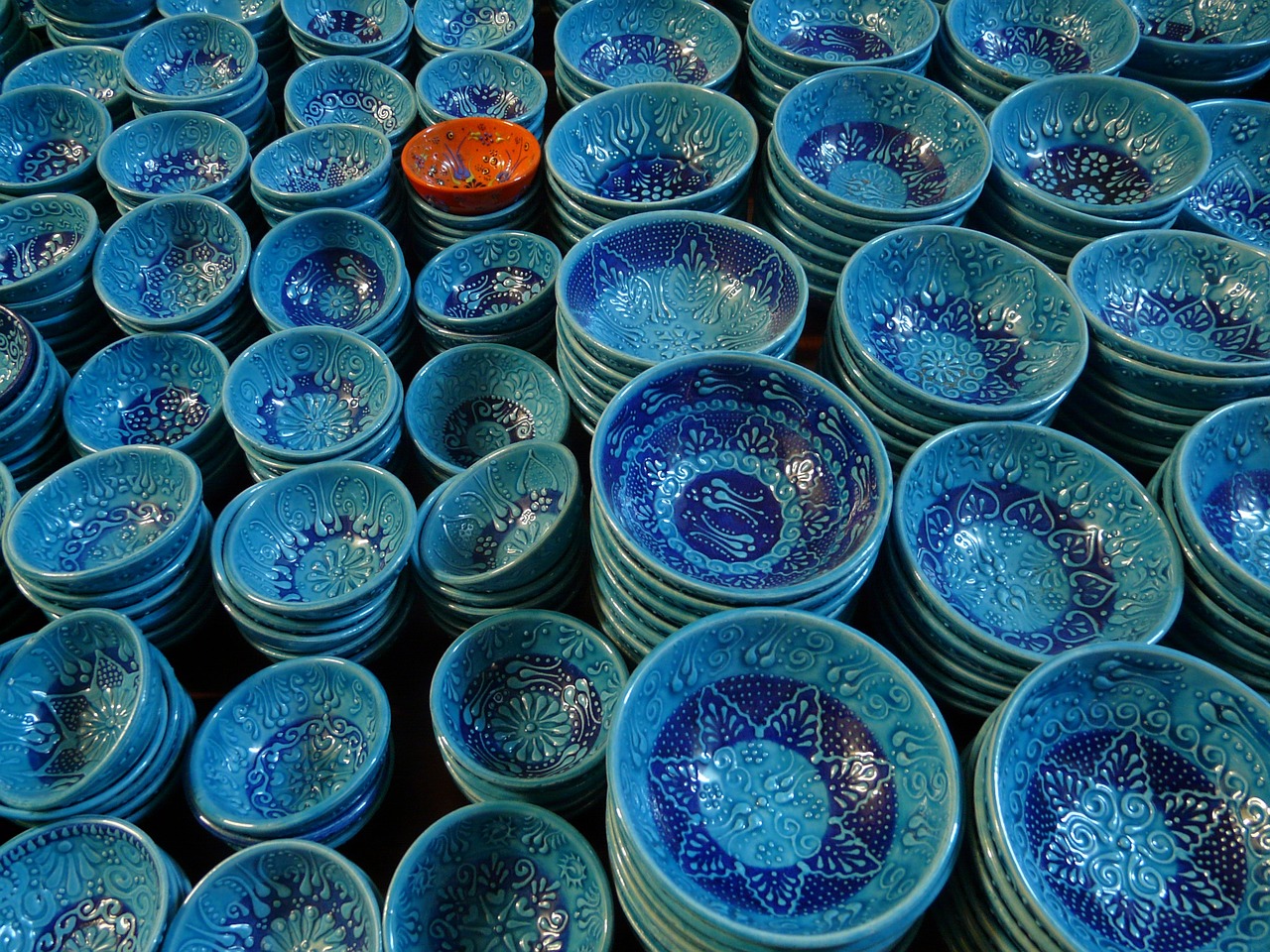
Middle Eastern Iznik Pottery
When you think of **pottery**, what comes to mind? Perhaps you envision simple clay dishes or rustic mugs. But let me introduce you to the world of Iznik pottery, a stunning art form that emerged in the heart of the Ottoman Empire. This vibrant pottery is not just about functionality; it’s a canvas for storytelling, cultural expression, and artistic mastery. Each piece is a testament to the rich history and cultural fusion of the region, making it a treasure worth exploring.
Iznik pottery originated in the town of Iznik, located in modern-day Turkey, during the 15th century. It blossomed during the reign of the Ottoman Empire, where it was primarily used to adorn mosques and palaces. The intricate designs and vivid colors of Iznik pottery are deeply rooted in Islamic art, showcasing patterns that often include floral motifs, geometric shapes, and calligraphy. But what sets Iznik pottery apart? It's the **unique glazing technique** that creates a stunning finish, allowing colors to pop with a brilliance that captures the eye.
The process of making Iznik pottery is as fascinating as the final product itself. Artisans begin by shaping the clay into various forms, from plates to tiles. Once shaped, the pieces are coated with a white slip, which serves as a canvas for the vibrant underglaze painting. The colors used in Iznik pottery are derived from natural minerals, resulting in a palette that includes deep blues, rich reds, and bright greens. After the decoration is complete, the pottery undergoes a high-temperature firing process, which not only solidifies the piece but also enhances the vibrancy of the colors.
One of the most iconic features of Iznik pottery is its **floral designs**. The artisans often drew inspiration from the gardens of the Ottoman palaces, incorporating flowers such as tulips, roses, and hyacinths into their work. These floral patterns symbolize beauty and nature, reflecting the harmonious relationship between art and the environment. Additionally, the use of geometric patterns represents the infinite, a concept deeply embedded in Islamic art.
In today's world, Iznik pottery continues to captivate collectors and art enthusiasts alike. Its **historical significance** and aesthetic appeal have made it a sought-after item in both galleries and homes. Whether you’re looking to add a touch of elegance to your dining table or seeking a unique piece of art for your collection, Iznik pottery offers something truly special. It's not just pottery; it's a piece of history that invites you to appreciate the craftsmanship and cultural heritage of a bygone era.
As you explore the fascinating world of Iznik pottery, remember that each piece tells a story, a narrative woven into the fabric of time and culture. From its origins in the Ottoman Empire to its status as a cherished art form today, Iznik pottery is a celebration of creativity, tradition, and beauty.
- What is Iznik pottery made of? Iznik pottery is primarily made from clay, coated with a white slip and decorated with vibrant underglazes.
- What colors are commonly found in Iznik pottery? The most common colors include deep blue, bright red, and rich green, derived from natural minerals.
- Where can I find authentic Iznik pottery? Authentic Iznik pottery can be found in galleries, specialty shops, and markets in Turkey, as well as online through reputable art dealers.
- Is Iznik pottery dishwasher safe? It's best to hand wash Iznik pottery to preserve the colors and intricate designs.
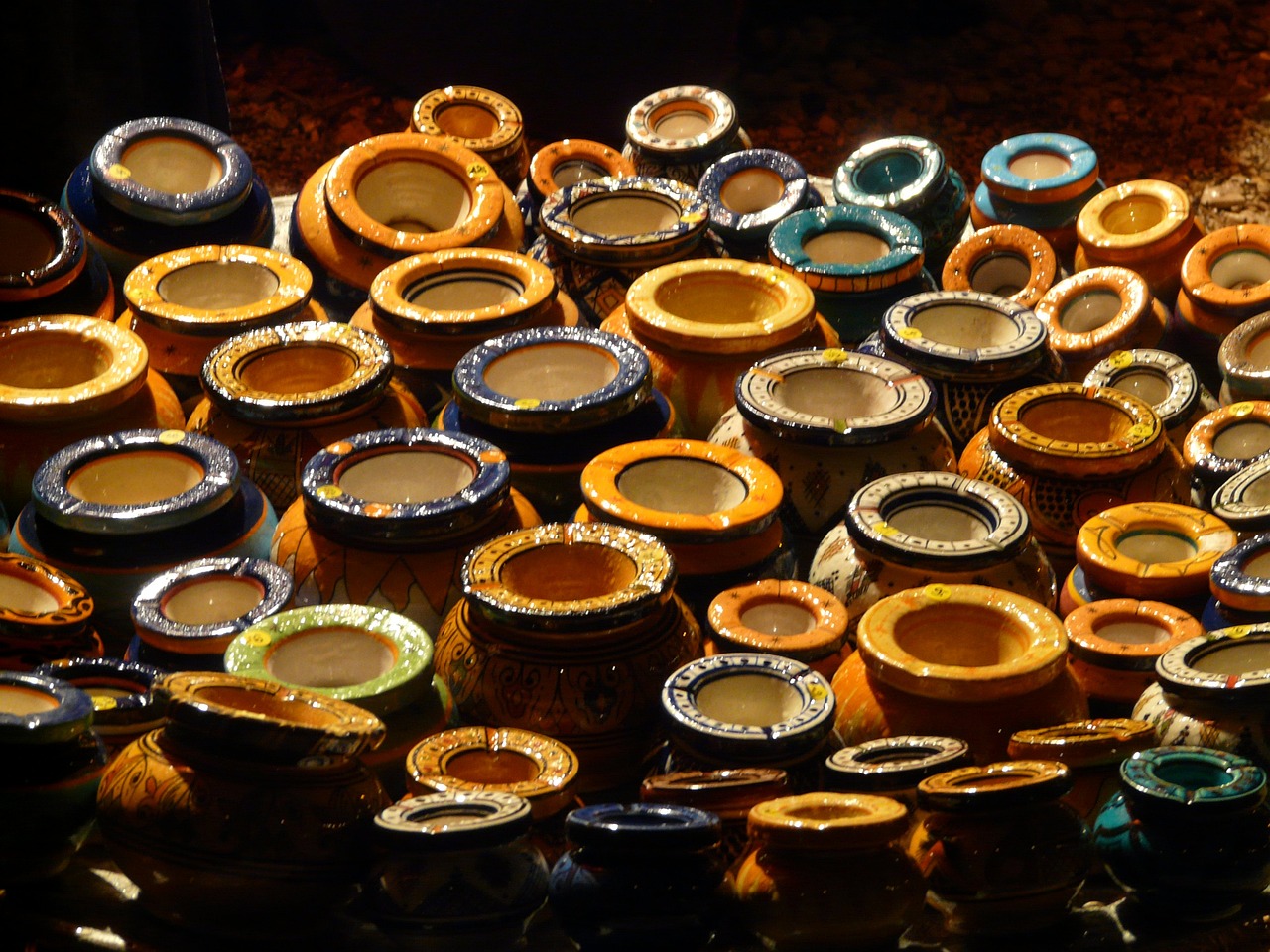
American Southwest Pueblo Pottery
When you think of Pueblo pottery, what comes to mind? For many, it evokes images of beautifully crafted vessels that tell stories of ancient cultures and rich traditions. Originating from the Native American communities in the Southwestern United States, Pueblo pottery is more than just a craft; it’s a living art form that embodies the spirit and identity of its creators. These artisans have been shaping clay for generations, creating pieces that are not only functional but also deeply symbolic.
The pottery itself is characterized by its organic shapes and earthy colors, often reflecting the natural environment from which it is derived. Imagine a warm desert landscape, with hues of terracotta, soft browns, and muted reds—these colors are the palette of Pueblo pottery. Each piece is a testament to the artisan's connection to the land, using locally sourced clay and natural pigments to create stunning works of art that resonate with the earth.
What sets Pueblo pottery apart is its cultural significance. Each design and motif carries meaning, often representing elements of nature, spirituality, or community. For instance, you might see symbols of rain, which are critical to the agricultural practices of the Pueblo people, or intricate patterns that symbolize the interconnectedness of life. These motifs are not just decorative; they serve as a narrative, a way for the artists to communicate their beliefs and experiences.
Moreover, the process of creating Pueblo pottery is deeply communal. Artisans often work together, sharing techniques and stories, which fosters a strong sense of community. This collaborative spirit is essential, as it ensures that the traditions are passed down through generations. In fact, many Pueblo potters today are reviving ancient techniques, such as the use of traditional coiling methods and natural firing processes, which produce unique textures and finishes.
To truly appreciate Pueblo pottery, one must understand the various styles that exist within this art form. Here’s a brief overview of some notable styles:
| Style | Description |
|---|---|
| Traditional Pueblo | Utilizes natural materials and ancient techniques, often featuring symbolic designs. |
| Santa Clara | Known for its blackware pottery, created using a unique polishing technique. |
| Hopi | Famous for intricate painted designs and storytelling motifs. |
As you explore the world of Pueblo pottery, it’s essential to recognize the challenges faced by these artisans today. The rise of mass-produced ceramics threatens the authenticity and livelihood of traditional potters. However, many artists are finding innovative ways to reach wider audiences through online platforms and art shows, ensuring that their heritage is not lost but celebrated.
In conclusion, American Southwest Pueblo pottery is a vibrant testament to the resilience and creativity of Native American cultures. Each piece tells a story, inviting you to connect with the past while appreciating the artistry of the present. So next time you come across a Pueblo pot, take a moment to admire not just its beauty but the rich history and cultural significance it embodies.
- What materials are used in Pueblo pottery? Pueblo pottery is primarily made from natural clay found in the region, often mixed with other natural materials for texture and durability.
- How is Pueblo pottery traditionally fired? Traditionally, Pueblo pottery is fired outdoors in a pit, which gives it its unique finish and texture.
- Are there specific symbols in Pueblo pottery? Yes, many symbols represent natural elements, spirituality, and community stories, each carrying significant meaning.
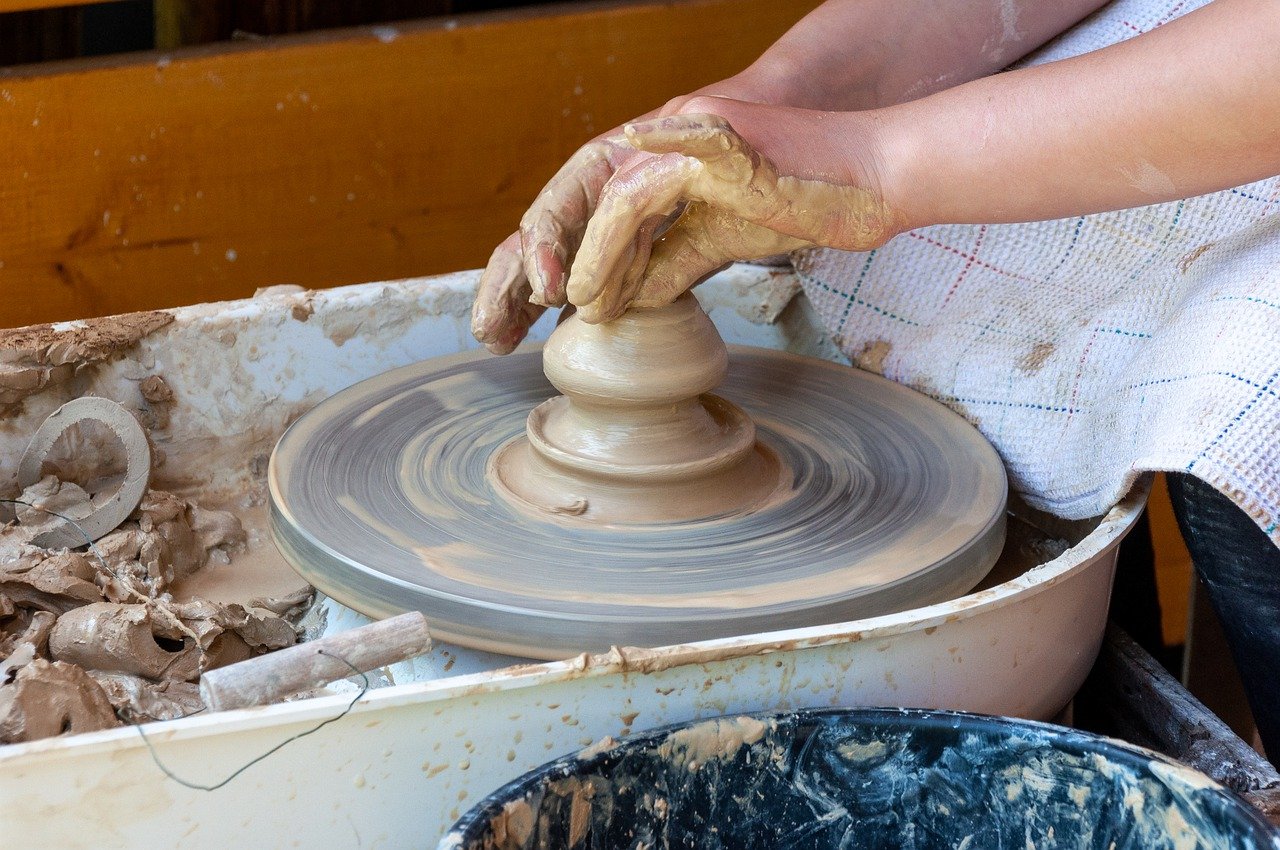
Scandinavian Stoneware
Scandinavian stoneware is a stunning blend of functionality and artistry, making it a beloved choice for both everyday use and decorative purposes. Originating from the Nordic countries, this pottery type is known for its robust and durable nature, which is essential given the region's climate and lifestyle. The beauty of Scandinavian stoneware lies not only in its practical applications but also in its ability to evoke a sense of calm and connection to nature through its designs and colors.
One of the most captivating aspects of Scandinavian stoneware is its minimalist aesthetic. The designs often incorporate earthy tones and natural elements, reflecting the region's stunning landscapes. Imagine sipping coffee from a beautifully crafted mug that mirrors the tranquil hues of a Nordic forest or the deep blues of the surrounding seas. This connection to the environment is a hallmark of Scandinavian design, where every piece tells a story of its origins.
Moreover, the crafting process of Scandinavian stoneware is steeped in tradition. Artisans often use techniques passed down through generations, ensuring that each piece is unique. The use of natural glazes and firing methods can result in variations in color and texture, which adds to the charm of each item. It's not just pottery; it's a piece of art that embodies the spirit of the region.
In addition to its aesthetic appeal, Scandinavian stoneware is incredibly versatile. It can be used for various purposes, from baking and serving to decorative displays. Many people appreciate how these pieces seamlessly transition from the oven to the dining table, showcasing both practicality and beauty. This versatility is particularly evident in the range of items available, including:
- Bowls
- Mugs
- Plates
- Serving dishes
- Vases
As you explore the world of Scandinavian stoneware, you’ll find that it often features subtle yet striking patterns. These designs may be inspired by traditional motifs or modern interpretations that resonate with contemporary tastes. Whether you prefer the simplicity of unadorned pieces or the intricate detailing of patterned stoneware, there is something for everyone.
Furthermore, the sustainability aspect of Scandinavian stoneware cannot be overlooked. Many artisans prioritize eco-friendly materials and practices, ensuring that their creations have minimal environmental impact. This commitment to sustainability resonates with consumers who value not only the beauty of the product but also the ethical considerations behind its creation.
In conclusion, Scandinavian stoneware is more than just pottery; it is a celebration of nature, tradition, and functionality. Its unique designs and sturdy craftsmanship make it a cherished part of both everyday life and special occasions. Whether you're an avid collector or simply looking to add a touch of Nordic charm to your home, Scandinavian stoneware is sure to impress.
- What is Scandinavian stoneware made from? Scandinavian stoneware is typically made from a mixture of clay, feldspar, and other natural materials that are fired at high temperatures to create a durable product.
- Can Scandinavian stoneware be used in the oven? Yes, most Scandinavian stoneware is oven-safe, making it ideal for baking and cooking.
- How do I care for my stoneware? To maintain the beauty of your stoneware, it's recommended to hand wash with mild detergent and avoid drastic temperature changes.
- Is Scandinavian stoneware environmentally friendly? Many artisans focus on sustainable practices, using eco-friendly materials and methods in their production processes.

Indian Blue Pottery
Indian blue pottery is a captivating art form that hails from the vibrant state of Rajasthan. Known for its vivid blue hues and intricate designs, this pottery style is a feast for the eyes and a testament to the rich cultural heritage of India. The origins of blue pottery can be traced back to Persian influences, which were introduced to India during the Mughal era. Over time, this craft evolved, showcasing a unique blend of Persian artistry and traditional Indian motifs.
The hallmark of Indian blue pottery lies in its use of a distinctive blue dye, derived from cobalt oxide. This dye is applied to the pottery before it undergoes a meticulous glazing process, resulting in a stunning finish that gleams under the sunlight. The artisans often incorporate geometric patterns, floral designs, and even mythological themes into their work, making each piece a story waiting to be told. The craftsmanship involved is nothing short of remarkable, with artisans spending hours perfecting their techniques to ensure that every piece is a work of art.
One of the fascinating aspects of Indian blue pottery is its eco-friendly production. Unlike many other pottery styles that rely on high-temperature kilns, blue pottery is fired at lower temperatures, making it more sustainable. This practice not only conserves energy but also aligns with the growing global emphasis on sustainability in art and craft. The materials used are often locally sourced, further enhancing the connection between the artisan and their environment.
Indian blue pottery is not just limited to decorative items; it also encompasses a variety of functional ware. From plates and bowls to vases and tiles, the versatility of this pottery style is impressive. Each piece is a blend of utility and beauty, making it a popular choice for both everyday use and special occasions. The vibrant colors and intricate designs can brighten up any space, adding a touch of elegance and charm.
As you explore the world of Indian blue pottery, you will discover that it is more than just a craft; it is a reflection of cultural identity and artistic expression. The artisans pour their hearts into their work, often passing down techniques and designs through generations. This not only preserves the art form but also fosters a sense of community and belonging among the artisans.
In conclusion, Indian blue pottery stands out as a significant cultural artifact that embodies the fusion of tradition and innovation. Its rich history, combined with the skilled craftsmanship of artisans, makes it a cherished art form both in India and around the world. Whether you are an art enthusiast or simply someone who appreciates beauty, Indian blue pottery is sure to capture your heart.
- What is the origin of Indian blue pottery?
The origins of Indian blue pottery can be traced back to Persian influences introduced during the Mughal era in India. - What materials are used in Indian blue pottery?
Indian blue pottery primarily uses locally sourced materials, including clay and cobalt oxide for the blue dye. - Is Indian blue pottery eco-friendly?
Yes, it is considered eco-friendly as it is fired at lower temperatures, conserving energy and resources. - What types of items are made from Indian blue pottery?
Items range from decorative pieces like vases to functional ware such as plates and bowls.
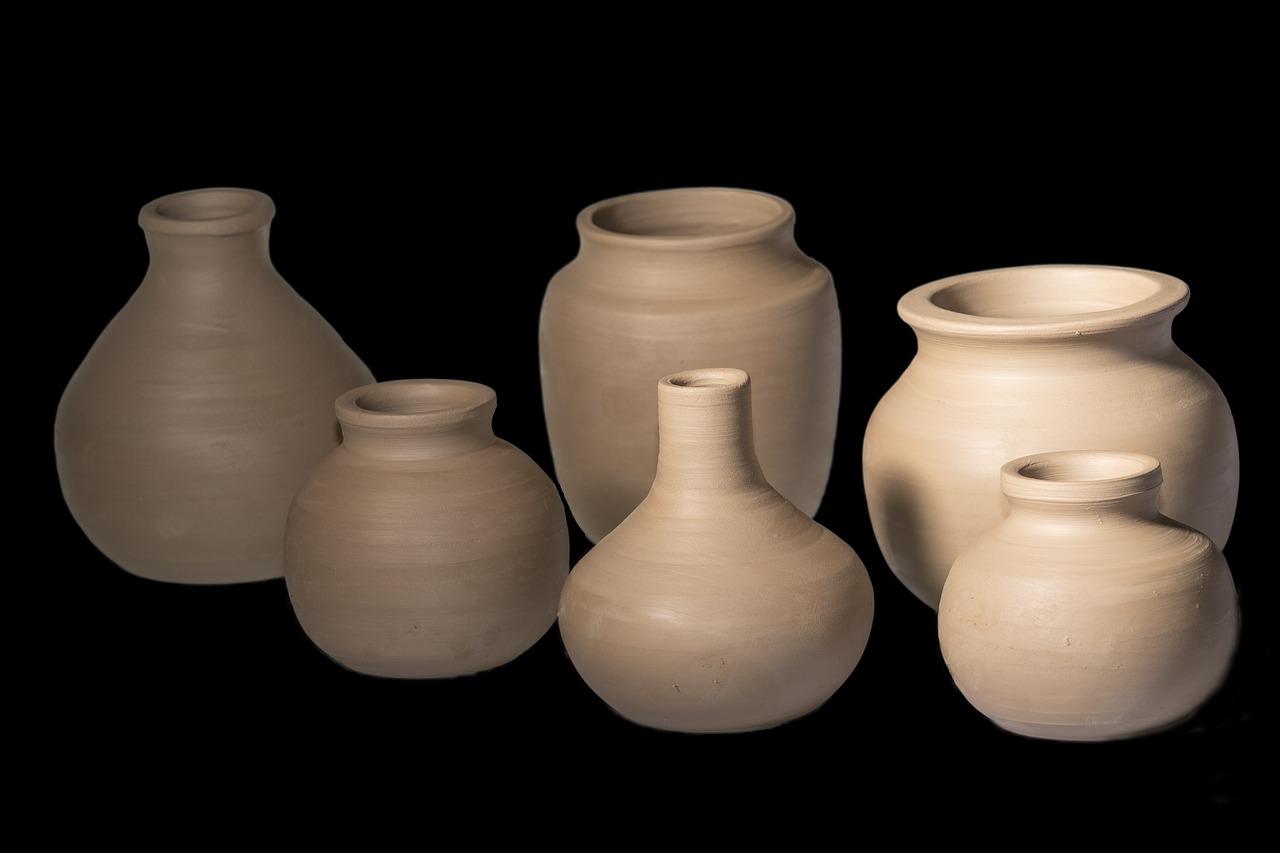
French Faience
French faience is a captivating type of pottery that has enchanted art lovers for centuries. Originating in the 16th century, this exquisite craft is characterized by its tin-glazed earthenware, which provides a brilliant canvas for colorful designs and intricate patterns. The term "faience" itself is derived from the Italian word "faenza," a town in Italy renowned for its ceramics. As the French adopted and adapted this technique, they infused it with their own artistic flair, leading to a rich tradition that varies across different regions in France.
One of the most remarkable aspects of French faience is its diversity. Each region has developed its own distinctive style, influenced by local culture, history, and artistic trends. For instance, the faience from Quimper in Brittany is famous for its charming motifs depicting local folklore and maritime themes, while the faience from Marseille is known for its vibrant colors and bold designs. This regional variation is what makes collecting faience so exciting; each piece tells a unique story and reflects the local identity.
In terms of technique, the process of creating faience involves several intricate steps. First, the clay is shaped into the desired form, often using a potter's wheel. After drying, the piece is coated with a tin glaze, which provides that characteristic glossy finish. Once glazed, the pottery is decorated with vivid colors and designs, often inspired by nature, mythology, or everyday life. Finally, the piece is fired in a kiln, which not only hardens the clay but also sets the glaze and decorations, resulting in a stunning final product.
Throughout history, French faience has been more than just functional pottery; it has served as a means of artistic expression and cultural identity. During the Renaissance, it became a symbol of wealth and sophistication, often gracing the tables of the elite. Today, collectors and enthusiasts cherish these pieces not only for their beauty but also for their historical significance.
To give you a clearer picture of the different styles and regions associated with French faience, here's a simple table that highlights some of the most notable features:
| Region | Characteristics | Notable Motifs |
|---|---|---|
| Quimper | Colorful, detailed scenes | Folklore, maritime |
| Marseille | Bold colors, geometric patterns | Floral, abstract |
| Strasbourg | Delicate, intricate designs | Historical motifs, landscapes |
In conclusion, French faience is not just pottery; it’s a celebration of culture, history, and artistry. Whether you're an avid collector or a casual observer, the charm of these ceramic pieces is undeniable. They remind us of the creativity and skill that artisans have poured into their craft over centuries, making each piece a valuable treasure in the world of ceramics.
- What is French faience? French faience is a type of tin-glazed earthenware pottery known for its colorful designs and historical significance.
- Where does French faience originate? It originated in France during the 16th century, influenced by Italian ceramics.
- What are the main characteristics of French faience? It is characterized by its glossy finish, vibrant colors, and intricate designs that often reflect local culture.
- How is French faience made? The pottery is shaped, glazed with tin, decorated, and then fired in a kiln to set the glaze and designs.
- Why is French faience collectible? Each piece is unique and represents a specific region's artistic heritage, making it a cherished item for collectors.
Frequently Asked Questions
- What is Raku pottery and why is it unique?
Raku pottery is a traditional Japanese craft that stands out due to its unique firing process. This technique involves removing the pottery from the kiln while it’s still glowing hot and placing it in combustible materials. This spontaneous and sometimes unpredictable process reflects the Japanese philosophy of wabi-sabi, which appreciates the beauty in imperfection and transience.
- What are the main characteristics of Talavera pottery?
Talavera pottery is known for its vibrant colors and intricate designs. Originating from Mexico, it showcases a rich blend of indigenous and Spanish influences. The craftsmanship involves hand-painting and glazing techniques that result in unique, eye-catching pieces that celebrate Mexican culture and heritage.
- Why is Celadon ware considered significant in Chinese pottery?
Celadon ware is celebrated for its stunning jade-green glaze and has a history dating back to the Song Dynasty. It represents the pinnacle of ancient Chinese ceramic artistry, often associated with elegance and refinement. The unique glaze is achieved through a complex reduction firing process, making each piece a work of art.
- What makes Italian Majolica ceramics special?
Italian Majolica ceramics are characterized by their vivid colors and elaborate designs. This traditional technique has evolved over centuries, showcasing regional styles that reflect Italy's rich artistic heritage. The intricate patterns and bright glazes often depict historical and mythological themes, making each piece a storytelling canvas.
- What is the historical significance of Iznik pottery?
Iznik pottery, originating from Turkey, is renowned for its intricate floral patterns and vibrant colors. Flourishing during the Ottoman Empire, it symbolizes the cultural fusion of the period, blending Islamic art with Byzantine influences. The craftsmanship involved in creating these pieces is a testament to the artistic legacy of the region.
- How does Pueblo pottery reflect Native American culture?
Pueblo pottery, crafted by Native American artisans, is known for its organic shapes and earthy colors. It emphasizes community and cultural identity, often featuring symbolic motifs that tell stories of the people and their traditions. This art form not only serves functional purposes but also acts as a medium for cultural expression.
- What are the defining features of Scandinavian stoneware?
Scandinavian stoneware is appreciated for its functional yet artistic designs, often incorporating natural elements and earthy tones. This style reflects the region's connection to nature and minimalist aesthetics, making it a popular choice for both everyday use and decorative purposes.
- What distinguishes Indian blue pottery from other styles?
Indian blue pottery is distinguished by its vibrant blue hues and intricate patterns. Originating from Rajasthan, this craft showcases a unique blend of Persian influences and Indian artistry. The use of natural dyes and traditional techniques makes each piece a colorful representation of cultural heritage.
- What is French faience and why is it important?
French faience is a type of tin-glazed pottery known for its colorful designs and historical motifs. This craft has evolved through various regions in France, each contributing to its rich artistic legacy. The intricate designs often reflect local culture and history, making faience a significant part of French ceramic art.



















